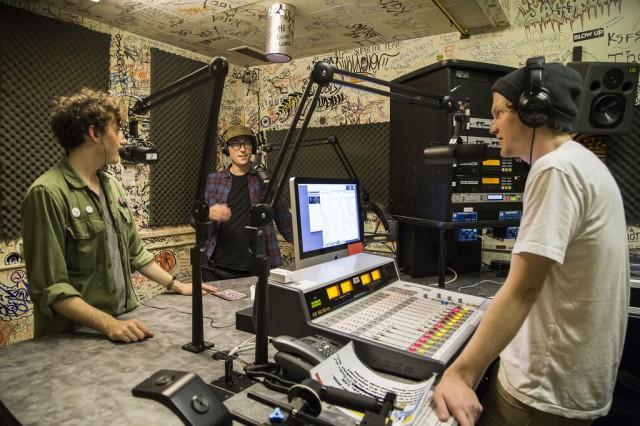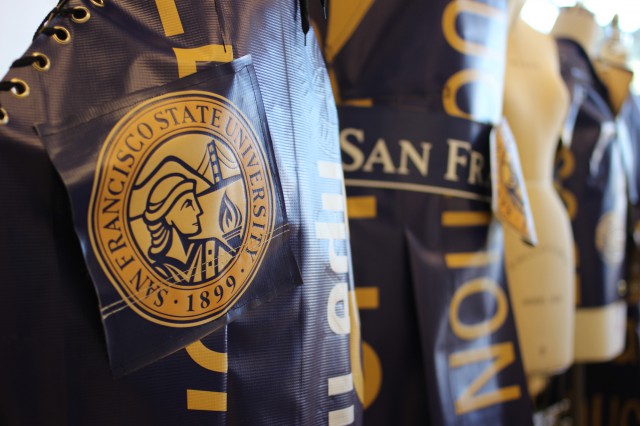[widgetkit id=6065]
Written By Ben Tasner
Photos by Lorisa Salvatin
A child of two deaf parents, Meir Schneider, was born with cataracts, glaucoma, astigmatism, and nystagmus. As a young boy he underwent five unsuccessful surgeries that shattered and scarred his eye lenses. He was declared permanently blind. Despite being told that his condition was hopeless he was determined to see. Now he drives.
Schneider spent his childhood reading and performing schoolwork in Braille. At the age of seventeen his life changed dramatically when he met an instructor who introduced him to the Bates Method of eye exercises, a natural vision therapy developed by William Bates in the late nineteenth century.
Schneider diligently practiced the Bates Method and combined it with his own regiment of self-massage and movement. Within six months he began to recognize visual objects for the first time and today he holds an unrestricted California driver’s license.
“Working on my eyes was at first painful,” says Schneider, who attended SF State from 1978-79. “Then slowly as I built more and more vision it became more normal for me. We worked and I improved my vision from something like 20/2000 to today about 20/70.”
Schneider ability to see defies the basis of modern vision diagnosis. An optometrist might take one look at his eyes and immediately conclude that he is blind because his lenses admit less than one percent light. Yet he can read the eye chart and he drives throughout the Bay Area on a regular basis.
“To be in a place where I can drive is beyond anyone’s imagination,” says Schneider. “The day that I got my driver’s license was one of the best things that has ever happened to me. It was like a prize. The biggest prize I could possibly get.”
Despite the rising rates of vision failure Schneider’s story of natural vision improvement runs cross current to the swell of traditional vision correction. The National Eye Institute reports the number of Americans who report some form of visual impairment is expected to double by 2030. But as the rates of vision failure continue to increase, mainstream medicine remains stagnant in its approach.
“Medicine does nothing about it,” says Schneider. “What happens with medicine is that they give you crutches to deal with it, but they are not doing anything to help the essential reason why vision gets worse.”
Schneider challenges the notion that vision failure is irreversible and the prolific tendency to over-correct through the use of lenses.
“The whole world is resistant,” says Schneider. “They say [vision failure] is a process of life, and that’s that.”
Medical professionals state nearsightedness, farsightedness and other refractive errors are a result of eye shape and a hardening of the lens, which cannot be changed. Schneider sites poor blood circulation to the head, stress, bad habits and environmental influences as the causes of most vision problems and believe that people can improve their vision if they explore these factors.
At his School for Self Healing on the corner of Santiago and 48th Street in San Francisco, Schneider, 59, analyzes habits like excessive close viewing, the prevalence of shoulder tension, and other symptoms of modern times, which have led to increasing rates of vision failure.
“When people were illiterate there were very few people with nearsightedness,” says Schneider. “When people started to read some of them became nearsighted, and when people used the computer many more become nearsighted.”
He has taken his experience and research, and translated it into a program of self-healing. He works with patients individually to improve their vision, leads group workshops periodically, and travels throughout the world helping others achieve the unthinkable.
“The reality is that traditional optometry and ophthalmology could do nothing for him,” says Erik Peper, professor at the Institute of Holistic Health at SF State, who met Schneider in 1976. “Here’s somebody who had horrible vision from birth, but he did not listen to a culture that told him he had no hope. He’s an exemplar of what is possible when we really have a drive and desire to achieve whatever we want.”
The exercises Schneider teaches draw on principles derived from the Bates method with the addition of massage, relaxation, and various forms of bodywork. The physical exercises are an important component of vision improvement because he says the eyes are a function of the body and cannot be treated separately, and blood flow to the eyes must be developed.
At his school near the ocean he has fourteen massage tables, a sauna, and a trampoline. Schneider leads his patients on Ocean Beach excursions and instructs them to walk backward in the sand. He wants people to activate muscles they rarely use and to relax the muscles they frequently use. He helps patients learn to isolate muscles and then unite the parts.
After relaxation has been cultivated, Schneider leads his patients through the eight principles of natural vision improvement: deep relaxation, adjustment to light, distance viewing, looking at details, periphery, balance of two eyes, balance use within each eye, and body-eye coordination.
He says that a myopic lifestyle leads to poor vision habits. Staring at a computer, or remaining transfixed on a cell phone for too long decrease the eyes’ abilities over time. He also believes that sunglasses are anti-productive, but he does have one use for them.
“We break sunglasses, that’s the only use I have for sunglasses,” says Schneider frankly. “We break one lens and put duck tape on the other lens, and it becomes an obstructive lens and we use that.
He frequently rubs his eyes, gently massaging them throughout the day, a technique he teaches his patients as well. Night walks and sunning are other practices he employees to strengthen various parts of the eye.
“The body sees well. We do things that make it not see well and we don’t compensate for what we do, and by not compensating we create all these problems.”
“Yoga for the Eyes” is a series of YouTube videos in which Schneider demonstrates how a person can quickly improve their vision. One of the methods, developed by Bates, but practiced by Tibetan yogis for thousands of years, is a palming practice, in which a patient cups his hands over his eyes. Schneider says that this is the most integral of all eye exercises because it both rests and energizes the eyes at the same time.
Lindsay Cartwright, a massage therapist and Schneider’s former operations manager, was hesitant to buy in at first.
“I was skeptical because his story is very grand,” she says. “But you see it’s not only true for him, but for a lot of the clients we have coming here. They have results that are just as miraculous. It’s not often the big stories you hear are true.”
Jeanne Harvey, 67, of Quebec City, Canada, had pseudo laminar dystrophy, which her ophthalmologist recommended treating with surgery. If left untreated, pseudo holes can lead to blindness. While waiting for the surgery she found out about Meir Schneider in a book, flew to San Francisco for one of his workshops and began practicing his exercises. Within a month her ophthalmologist told her she no longer needed surgery.
“My mother was blind, two of my uncles were blind, and my husband is blind,” says Harvey. “I’m very grateful to find Schneider and his work.”
Schneider has been acknowledged by many leading experts in the vision field, including August Reader III, a clinical professor of ophthalmology at California Pacific Medical Center. Reader says that he has personally seen improvement in his patients who have worked with Schneider.
Doctor Edward Kondrot, an ophthalmologist and homeopathic physician, is interested in Schneider’s work and focuses his own vision research on reversing chronic eye disease, with an emphasis on light. He says that ‘light at night’ is not normal for humans and it is the most dramatic environmental change in the last thirty years, a direct result of computer use and artificial light. He says the intensity of this light is much higher than natural light and the wavelength is much shorter—a dangerous combination.
In the face of miraculous results, Schneider, Kondrot and other natural vision healers remain ostracized by the traditional vision world.
Kondrot says mainstream ophthalmology and natural vision therapy are “two different approaches to healing and they will never agree.”
Schneider says the fathers of ophthalmology in America decided that vision cannot improve and the issue has never been revisited.
“It’s a false decision,” says Schneider. “I’ve disproven it thousands of times so far.”
He thinks most ophthalmologists and optometrists are merely students of their teachers and ignorant to natural vision improvement, but he also thinks there’s more to it than that. He says his accomplishments challenge the entire system and people are scared.
“The whole school is to give you a correction and you’re brought up in that thinking,” says Alfred Lee, 93, an optometrist on Sacramento Street in San Francisco.
Lee says that optical schools are starting to come around to natural vision techniques, but not too long ago an optometrist could get his license revoked if he tried something like what Schneider is doing.
“At that time if anything is out of the realm or not the way they want it you’re blacklisted,” says Lee.
The UC system came close to conducting a research study on Schneider’s techniques but eventually backed out. He’s still waiting for someone else to come calling. Meanwhile he continues to help people get out of glasses.
Schneider’s School for Self Healing is intended primarily for people with vision problems, but also for those who wish to improve various muscular issues, learn embodiment techniques, and increase mindfulness. It has a vocation school status, so not only does he work with patients, but he also trains people to teach his method of healing. Schneider has one-hundred seven instructors teaching his method of vision improvement in Brazil and many others teaching throughout the United States. His new book Vision for Life is available worldwide, printed in English, Spanish, German, Mandarin, Hebrew and Czech.
Unfortunately, he says there is one downside for the people that visit him.
“They have to contend with my terrible jokes.”






